はじめまして! チョコです。アメリカ人です。6年ぐらい日本語を勉強しています。よろしく! (previously @chokopan)
Don't wanna be here? Send us removal request.
Text


I'm almost done with the N5/Kanken 10 kanji! I just have one more kanji left (長) which I'll probably see in Anki tomorrow. So excited to move onto sentence cards! ヽ(* ´▽` *)ノ
I recently bought a Kanji Kentei study book on Amazon for level 10, and it has all the kanji I've been studying so far since February. I think going through it will be great writing practice and help me learn readings through vocabulary and sentences, as a supplement to the Anki deck I'm using. It wasn't too expensive either, and it shipped relatively quickly. It's also quite colorful inside, as it's meant for children. So cute!
I've been looking for a kanji writing sheet generator that includes tracing in several boxes and dotted lines with no success, so I decided to make my own.
Linked below is a MS Word document free to download!
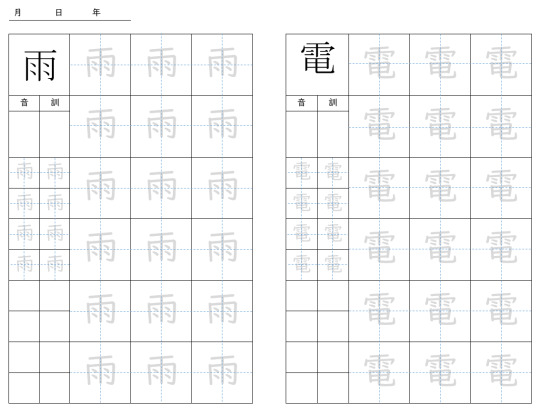
Document features:
Boxes: A table with certain cells merged to create a grid layout. Two small spaces underneath the kanji character box on the left side are for onyomi (音) and kunyomi (訓) readings.
Small writing practice: Two columns of small boxes are underneath the large kanji square on the left side. These are for practicing writing smaller. Half of these contain dashed lines and half do not.
Big writing practice: Children start by writing big, so there are plenty of large boxes with dashed lines to practice in.
Dashed lines: Inserted shapes with over-text wrapping. The lines for the larger squares are grouped together, and the lines for the smaller squares are grouped together. Anchoring is used so they don't move around with text.
Fonts: MS Mincho is used in the large kanji square on the left side. The grey kanji to trace use a "Kyokasho" font called UD Digi Kyokasho N (which can be downloaded online for free, or you can find another kyokasho font to use, if you like). Kyokasho fonts mimic handwriting, which is more useful to trace than a computer font.
DOWNLOAD ✨ HERE! ✨
The link expires in 7 days. Please send me an ask if you would like to download it after the expiration. 😊
40 notes
·
View notes
Text


I figured out the color, when printed, that disappears under the red check sheet! It took a few tries, because the slightly darker color still showed through the red check sheet.
If you have a red check sheet and want to try using it with typed notes, the RGB color is: 254/215/198 and the hex code is #fed7c6. It's a light peach color.
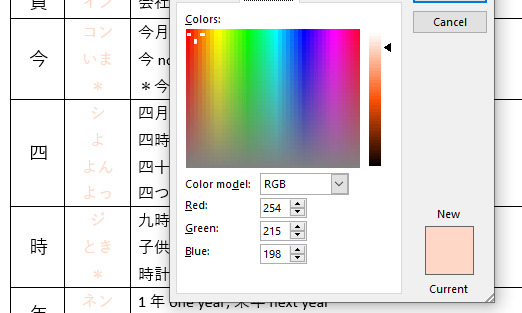
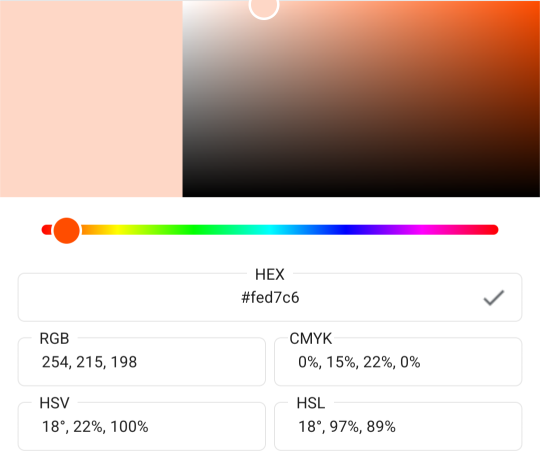
When printed, this color disappears nicely under the red check sheet. However, it is quite light when printed on white computer paper, making it hard to see. I want to try making the color darker so that it's easy to read AND disappears under the red check sheet.
I'm unsure how to scan or take a picture of the original printed text in my book to replicate the font color on a computer screen. One suggestion I saw on Reddit was to try and color match using Pantone colors. I think it's somewhere in between Pantone 162 and Pantone 163. I have another book with a red check sheet where the font color seems closer to Pantone 170, but my attempt to replicate it in a Word document resulted in a printed color that was still visible under the red check sheet.

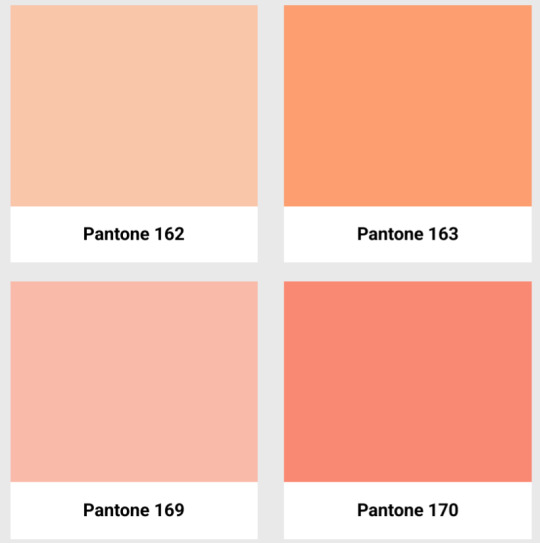
Does anyone have advice on how I can do this? Help would be much appreciated!
17 notes
·
View notes
Text
みんな、久しぶり!
2週間前に私は結婚していました!あの日は全てカンペキでした。私たちはとても嬉しいです!(*´∀`*)

テーマは桜でした!偽の花とリボンを買って、私のコサージュとブライダルブーケを友達と作りました。私たちは旦那のブートニエールも作りました。



漢字の勉強を続けています。新しい本を使って、語源について。面白くて、とても有用と思います!タイトルは "World of Kanji" です。


みんな、日本語の勉強はどうですか?がんばりましょうね!
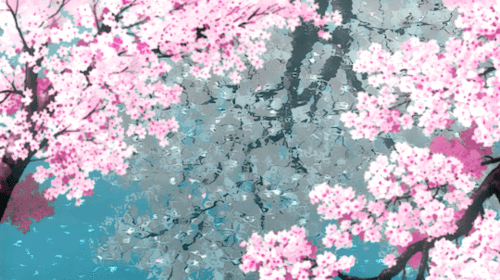
40 notes
·
View notes
Text
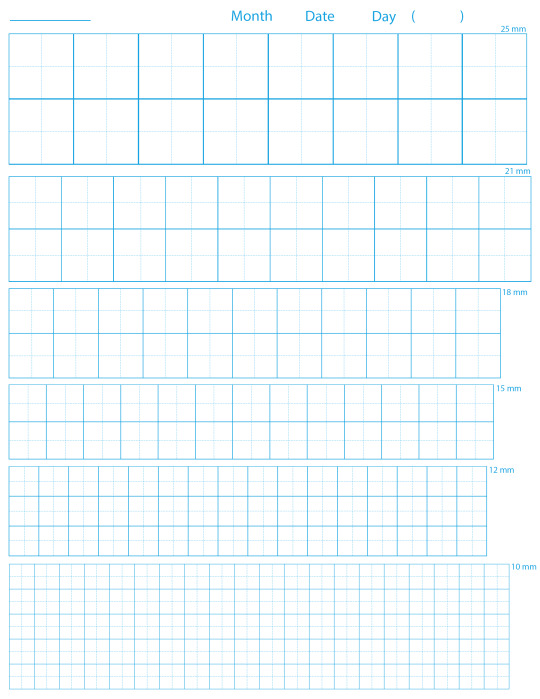
I've been struggling with writing kanji characters in the same size as each other, so I searched online for practice sheets I could print out because the 5 mm squares in the Kokuyo Campus notebooks I already have are difficult to write in being so small.
I think I just need to practice writing in bigger squares first, which I had trouble finding online in a good resolution with the dotted crosshairs in the center. So I made my own!
The grids are of different sizes based on writing notebooks that Japanese schoolchildren use:
25 mm squares - 1st grade
21 mm squares - 1st and 2nd grade
18 mm squares - 1st, 2nd, and 3rd grades
15 mm squares - 2nd, 3rd and 4th grades
12 mm squares - 3rd, 4th and 5th grades
10 mm - 4th, 5th and 6th grades
The sheet I made has all six of these sizes in descending order from biggest to smallest. The sizes in millimeters are also provided for reference. More rows for the smallest sizes are included compared to the larger sizes since being able to write small is more useful. A bonus of writing the same kanji multiple times is increased muscle memory, which promotes long-term memory retention.
The design of the sheet mimics what schoolchildren use; it includes dotted crosshairs in each square and space at the top to write the current date. The short line to the left is probably for a child's name, but you could put the topic or subject there or whatever other notes you like.
I hope people find this helpful!
手書きの練習はがんばって!(*´▽`*)
108 notes
·
View notes
Text
Genki 1 Kanji List vs. N5/Kanken 10 List
In this post, I shared the combined JLPT N5 and Kanji Kentei (Kanken) level 10 kanji list. As I'm getting closer to learning all the kanji on that list, I decided it would be a good idea to go through the Genki 1 kanji list to see how many kanji I've learned so far.
Genki 1 has a list containing 145 kanji. Of these, 92 of them are in the N5/Kanken 10 list. That means after finishing TKA's kanji deck, I'll have learned 63% of the Genki 1 kanji! (´▽`*)
Here are the 26 kanji from the N5/Kanken 10 list that are not in Genki 1:
王 玉 目 耳 止 足 字 力 寺 犬 夕 化 花 竹 草 林 森 交 音 問 石 糸 空 村 虫 良
So basically:
118 kanji in the N5/Kanken 10 list (26 kanji are not in Genki 1 list)
145 kanji in Genki 1 (53 kanji are not in N5/Kanken 10 list)
Here are the 53 kanji from Genki 1 that are not in the N5/Kanken 10 kanji list sorted by lesson...
Lesson 4: 曜 Lesson 5: 元 私 飲 Lesson 7: 京 会 社 帰 Lesson 8: 員 新 作 仕 事 思 次 Lesson 9: 家 少 古 知 Lesson 10: 住 買 道 雪 自 夜 朝 持 Lesson 11: 紙 近 明 病 院 映 画 歌 市 所 勉 強 有 旅 Lesson 12: 昔 々 神 起 失 使 働 連 別 度 青 色
... And by JLPT level (based on jisho.org results):
N4: 曜 元 私 飲 京 会 社 帰 員 新 作 仕 事 思 家 少 古 知 住 買 道 自 夜 朝 持 紙 近 明 病 院 映 画 歌 勉 強 有 旅 起 使 別 度 青 色 N3: 次 雪 市 所 昔 々 神 失 働 連
Most of the above kanji are N4 level, which is great! These are the ones I'll start with once I'm done with the current TKA kanji deck. They haven't released the N4/Kanken 9 deck yet, but hopefully I'll be able to study on my own until then using the same process I've been using to learn kanji meanings:
Look up the kanji on JapanDict.
Find the most common meaning of the kanji.
Find the radicals and components in the kanji and use them to create a mnemonic to remember the meaning. If coming up with a mnemonic is tough, look up the kanji on Kanji Koohi to see what others have come up with.
Write down the on'yomi and kun'yomi of the kanji.
Look up and write down common vocabulary words that use the kanji as well as previously learned kanji only.
Practice writing the kanji in the correct stroke order.
I haven't figured out a defined process for learning kanji readings yet, other than to look up and write down vocabulary words that have kanji I've learned already. I suspect that connecting vocabulary words to their pronunciations will be really difficult at first, but become easier with repeated exposure over time.🤞

20 notes
·
View notes
Text

I got excited about 化 and 花 sharing readings, only for 読, 言, and 売 to not share any readings. If only it were that easy! 😂

Since I went to see the plum blossoms the other day, here is a flower name with a Snoopy plate! The surname 花岡 is read Hanaoka, and it belongs to about 19,800 people.
花 means flower. It's read はな, カ, or ケ. It's composed of 艹 the grass radical, which hints at the meaning, and 化 change/transform, which provides both the カ and ケ readings.
岡 means mount, hill, or knoll. It’s read おか or コウ.
240 notes
·
View notes
Text



みんな、こんにちは!
今日は何をしましたか?友達とレストランで美味しいブランチを食べて、タピ活をしました。
オムレットの中でハムとソーセージとキノコとタマネギとチーズがありました。すごく美味しかったです!肉は美味しいですが、野菜も食べるのが大切でしょう?
いちごミルク味とタロ味が好きですが、今回イチゴのを選りました。とてもおいしかったです!
今週の晩ご飯は生姜焼きです!生姜のソースを作るは簡単です。ソースの材料は:
醤油 (しょうゆ) - soy sauce
味醂 (みりん) - mirin
砂糖 (さとう) - sugar
料理酒 (りょうりしゅ) - cooking sake
おろしたて生姜と玉ねぎ- freshly grated (おろしたて) ginger (しょうが) and onion (たまねぎ)
最近、私の勉強は快調です。ようやく漢字を思い出して、書くもができます!嬉しいです!(*^▽^*)
先週の漢字:
草 (grass) 🌱 - Grass/plant radical + early/fast = Grass is the fastest growing plant.
林 (grove)🌲 - Tree + tree = Two trees make up a grove.
森 (forest) 🌳🌳 - Tree + tree + tree = Three trees make up a forest.
交 (mix, mingle) 🥣 - Pot lid radical + Father = The Pot Lid Dad Society (dads wearing pot lid hats) have a mixer every 6 (六) months.
校 (school) 🏫 - Tree + Mingle = The Pot Lid Dad Society has their mixers/meetings outside the school.
言 (word) ✏️ - Lines + Mouth = You use your mouth to say lines of words.
語 (language) ✍️ - Word + 5 + Mouth = Language is produced by many mouths.
話 (story, to talk) 🗣️ - Word + Tongue (or Thousand + Mouth) = A story is passed down from one person to the next until a thousand mouths can repeat it.
売 (to sell) 🎁 - Samurai + Hat + Human Legs = A jobless samurai walks door-to-door to sell hats.
読 (to read) 📖 - Word + Sell = Extra, extra! Read all about it! (The newspaper "sells words.")
本 (book, origin) 📕 - A book is the root/origin of knowledge, made from trees (木).
#japanese#japanese language#langblr#japaneseblr#japanese langblr#jpnlangblrnet#日本語#勉強#日記#ダイアリー#料理#食���物
17 notes
·
View notes
Text
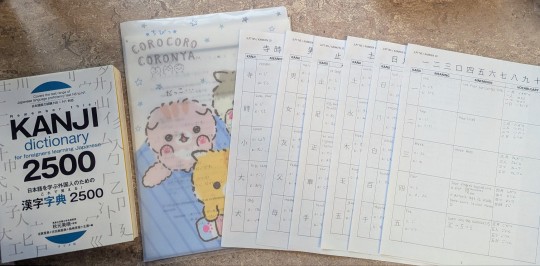
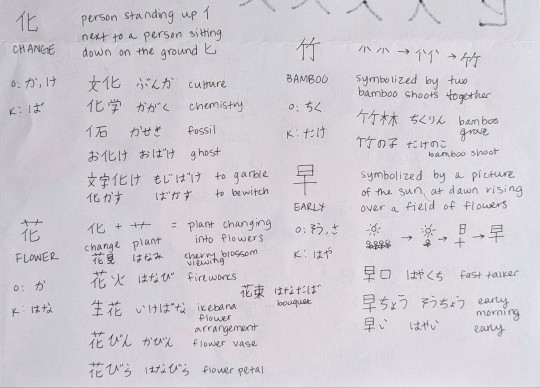
今日は図書館に漢字を勉強しました。その漢字辞典は意味と言葉を探しました。例文もあります。とても有用です!
漢字を書くのがとても楽しいですね!もっと手書きを練習したいです。✍️ 💕
今日の漢字:
化 (change, transform) 🔄
花 (flower) 🌸
竹 (bamboo) 🎍
早 (early, fast) 🌞
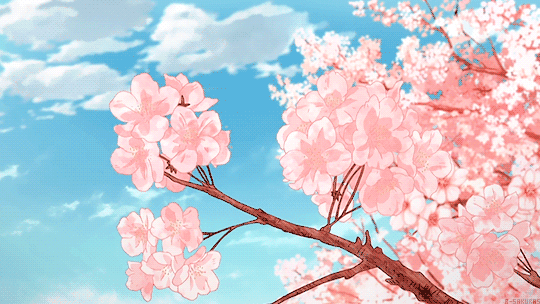
49 notes
·
View notes
Text
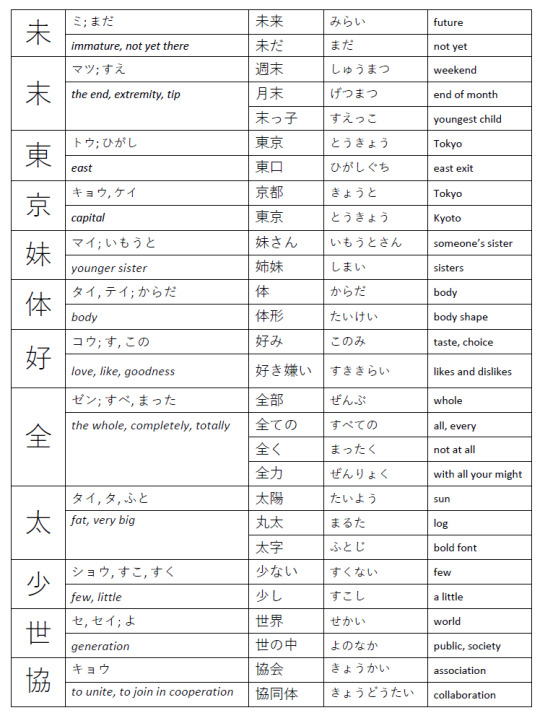
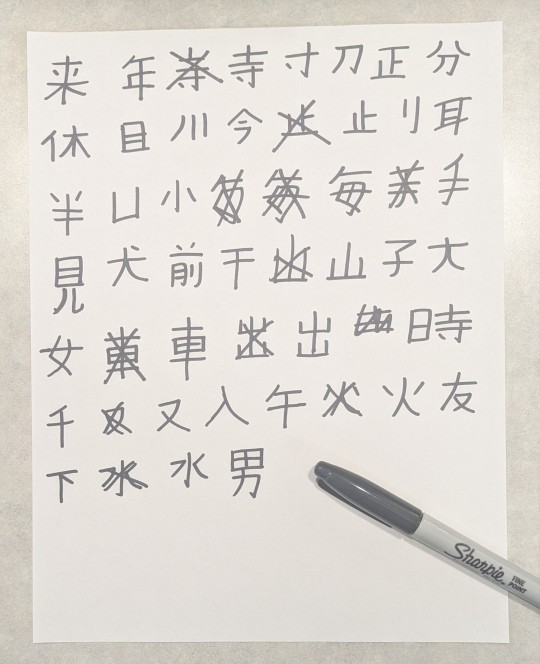
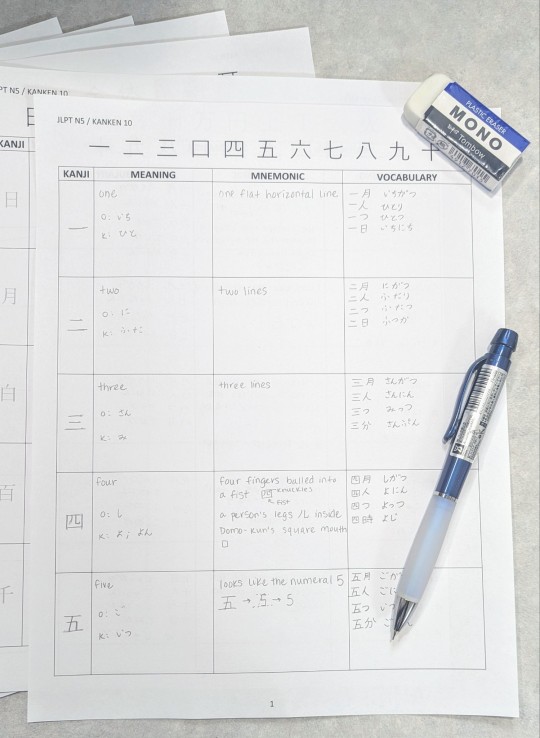
Progress So Far
Writing practice during reviews on a blank sheet of copy paper using a Sharpie
Picked out the kanji that are in my study book but not in the TKA deck and made a study sheet (there's 12 of them: 父 今 午 前 来 青 赤 後 何 良 北 南)
Made some worksheets to review and consolidate my kanji knowledge so far
Thinking About My Learning Methods
I missed a few days of Anki reviews and got back to it yesterday to find 50+ reviews. It took me some time to get through them, and I forgot a few kanji, like 前 (まえ; in front of, before). The front of the card had "in front of," and I had to recall what the kanji looked like and replicate the stroke order. I vaguely knew what it looked like, and I knew I could pick it out in a list, but I completely blanked on the stroke order. As I continued with my reviews and noticed another kanji that I forgot how to write (寸; small measurement).
Stroke order serves as a memory aid, but it's clearly not enough to remember some kanji, so I'm trying to pay more attention to the parts that make up a given kanji and see if I can make a story about it. I used Kanji Koohi before when I was using WaniKani, and found people's stories really helpful. This time, in addition to Kanji Koohi for mnemonics, I'm also using JapanDict to understand how a kanji breaks down.
For example, 前 is composed of the following parts:
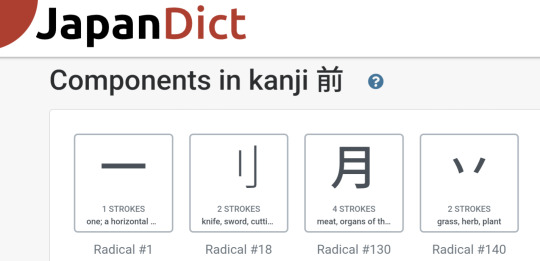
Looking at the kanji, 一 (one) and 艹 (grass) are put together to make 䒑, which isn't an official radical. In TokiniAndy's deck 䒑 is called called "8 legged horse crown," which isn't really working for my memory. But on Kanji Koohi, many stories referred to 䒑 as "a bull's horns," which I feel is more memorable. Also, 刖 is referred to as "butcher," which makes sense since 月 (body parts) +刂 (blade) can be extrapolated to "cutting body parts" (which is what a butcher does).
Thus, the mnemonic or "story" for this pesky kanji 前: A butcher wearing bull horns is cutting body parts in front of me with a huge blade.
For other kanji that have 䒑 in it, like 金 (gold) and 来 (come), I want to keep the usage of 䒑 meaning "bull horns" consistent for making mnemonics. Something like:
金: A bull with gold horns lives in the king's (王) house (I've learned 𠆢 as a "roof").
来: Omg! A bull is coming towards you! Quick, run away!
I still have many meaning cards to go in the Anki deck before sentence cards will start appearing. The goal of the sentence cards is to read the word on hiragana in the front and be able to write the kanji for that word. In other words, see the pronunciation and produce the kanji. I feel like this is significantly harder than pure recognition of a kanji's meaning, and I'm a bit nervous about how well it'll go. I do have a decent vocabulary bank in my head, but the process of attaching kanji to the words I already know is a slow process. I think my process for this will be three-fold: mnemonics, writing practice (either with a pen and paper or just my finger on the palm of my hand), and repeated exposure.
Does remembering how a kanji is pronounced in a specific word really eventually lead to being able to guess how the same kanji is pronounced in a different or unfamiliar word? I've seen people talk about being able to guess a kanji's meaning just by looking at it, but that sounds like it has more to do with the parts or radicals it is made up of rather than the pronunciations.
For those of you Japanese learners who are more advanced, do you have any insights on how your kanji learning process/method has changed over time compared to when you first started learning kanji? 🤔
69 notes
·
View notes
Text

I started using this book to help me study kanji alongside the TokiniAndy Anki deck (see this post). I really like the visual breakdown of the kanji pictograph, though I wish there were a few more rows of squares to practice writing (and that the squares had dotted lines inside them).
For reference, here is the list of kanji that are in that Anki deck. These kanji are pulled from a combination of N5 and Kanken level 10 lists.
一 二 三 口 四 五 六 七 八 九 十 日 月 白 百 千 万 円 上 下 人 火 土 水 木 王 玉 国 金 休 目 見 耳 止 足 正 車 手 子 字 学 田 力 男 女 友 父 母 毎 分 今 午 年 寺 時 小 大 犬 半 前 来 川 山 出 入 天 夕 名 化 花 竹 早 草 林 森 交 校 言 語 話 売 読 本 文 書 右 左 立 音 問 間 聞 生 青 赤 先 石 糸 後 気 空 高 何 町 村 中 虫 行 良 食 雨 電 外 北 南 西 東 長
As of this morning, I'm almost halfway through this list! 84 more meaning cards to go, and then I'll start seeing sentence cards!
My goal is to study 5 new cards per day in the kanji deck and the vocabulary deck; I'm doing them in tandem to reinforce kanji pronunciations and review previously learned vocabulary. By focusing on the meaning of the kanji and practicing writing, I'm able to tie the meaning to two pieces of information to help solidify it in my memory: 1) the mnemonic if I use one, and 2) the stroke order of the kanji. Some of the stories in the kanji deck are not super memorable for me, so I'm using some of my own mnemonics.
I much prefer this method over WaniKani because:
My studies have been more consistent. 5 cards per deck (10 total) per day, in the morning before work.
I've been less stressed out. I am learning the meanings of individual kanji first, and not worrying about all their readings.
My vocabulary is growing. I am reviewing vocabulary I already know, and learning new words. (I guessed that 閉まる means "to close" based on the context of the sentence it was in! This made me so happy! 😭)
I've started recognizing kanji in words I already know. For example, I learned 末 today from the aforementioned book (I haven't come across it in the Anki deck yet). I already know the vocabulary word 週末 (this weekend) and how it's pronounced (しゅうまつ). Thus, all I need to worry about right now is to remember that 末 is pronounced まつ in this particular word, and not stress about what the other readings of 末 are. I can learn that later, when I see vocabulary words that have it.
Once I finish learning the meanings of the kanji, the deck will start giving me sentence cards that contain vocabulary words using those kanji. This will help me learn kanji readings in the context of vocabulary words, rather than lone pronunciations.
This last point is something that really bothered me about WaniKani. For example, 丁 was connected to the character of Mrs. Chou to remember the reading ちょう. Although I remember this mnemonic, how can it be connected to 町, which contains 丁 but has a different pronunciation (まち)? Turning Japanese sounds into words (e.g. りょく→ rock) is tricky, and I'd rather spend my time practicing writing or learning words rather than stretching my imagination to come up with these farfetched mnemonics. 🤷♀️

79 notes
·
View notes
Text
昨日は一日目のテクニカル編集クラスです。クラスはオンラインで、とても便利です。昨日は教科書を買いました。今日は郵便物で来て、仕事後で晩宿題をします。
自分で日本語の勉強を続きています。毎朝、Ankiで漢字と言葉を復習しています。少し文法を練習して、マンガも読みます。最近、チーズスイートホームを読みます。とてもかわいくて、面白いですね!子猫が大好き!
アニメも見ていますが、まだ字幕を頼りって、エピソードを分かりたいです。悔しいもなりたくないですので。
じゃ、またね!
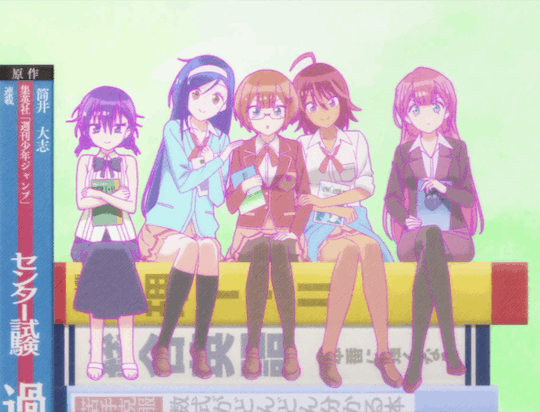
*As always, corrections are welcome! (=^・^=)*
#japanese#japanese language#langblr#japaneseblr#japanese langblr#jpnlangblrnet#日本語#勉強#日記#日記ダイアリー#ダイアリー
6 notes
·
View notes
Text
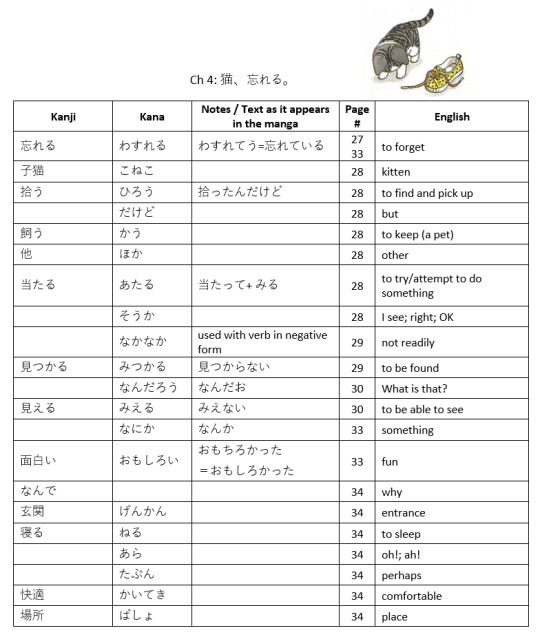
Grammar Points:
~だけど = but; however; although
~てみる = implies trying to do something and seeing what happens
~ない conjugation form (飼う➝飼わない)
~ている conjugation form
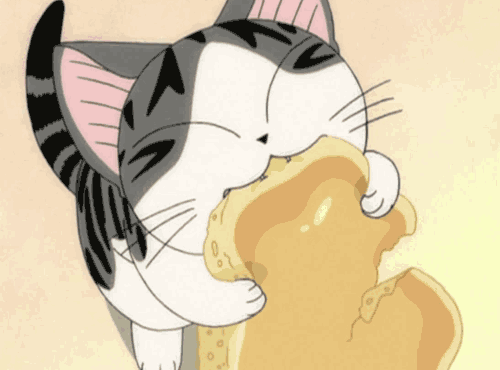
#japanese#japanese language#langblr#japaneseblr#japanese langblr#jpnlangblrnet#日本語#勉強#マンガ#チーズスイートホーム
16 notes
·
View notes
Text
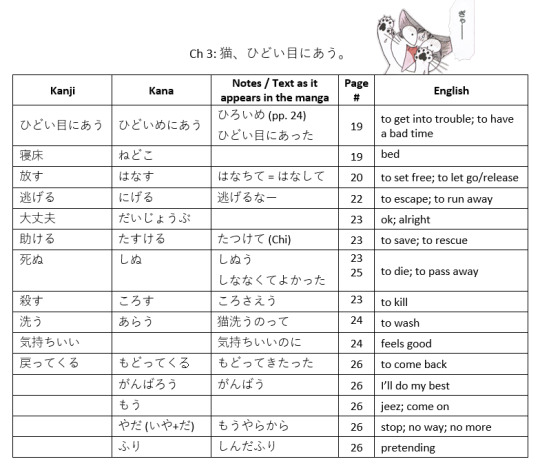
Grammar Points
~な = don't (only applies to な, prohibitive; used with dictionary form verb)
~った = used in casual speech to add emphasis, making the tone feel a bit more emotional or forceful
~なあ = wow; ooh (used at sentence end to express admiration, emotionality, etc.)
~のに = a conjunction that means "even though" or "despite," and it's used to express contrast or unexpectedness between two things

#japanese#japanese language#langblr#japaneseblr#jpnlangblrnet#japanese langblr#日本語#勉強#マンガ#チーズスイートホーム
22 notes
·
View notes
Text
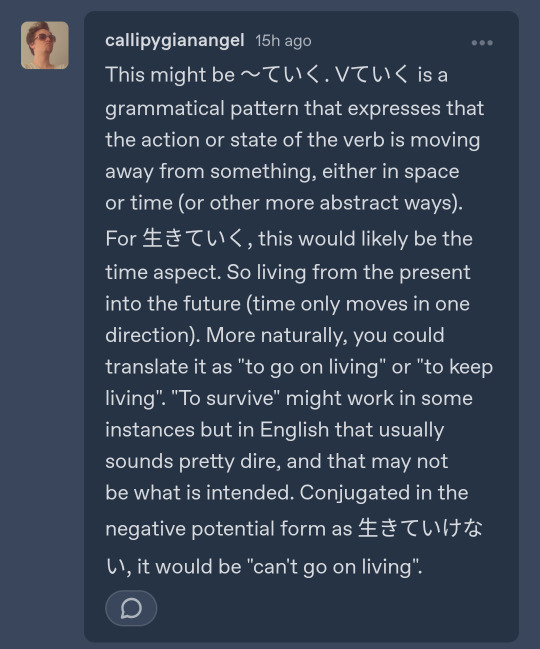
Ah, I see! I haven't encountered 〜ていく yet so I didn't recognize it here. Thanks so much for your explanation, @callipygianangel and @dokushoclub! ❤️

Grammar Points
Passive verb conjugation (拾う➝拾われる)
ちゃ = informal contraction of では that functions as a conditional statement
Short form verb conjugation (~た = plain past tense)
~んだ (casual, spoken form of のだ; used to provide an explanation or to emphasize a point)
~がる (expresses someone's desire or wish in the third-person, meaning someone else wants to do something)
~みたい (looks like; seems like)
Question: How does 生きていけない work? 生きて is the て form of the verb 生きる, but what is the いけない ending? It's not 〜てはいけない so what is it? A search online revealed it could be the potential form of the verb 行く, which is 行ける, meaning "to be able to go" or "to be able to do something." Is this correct? 🤔
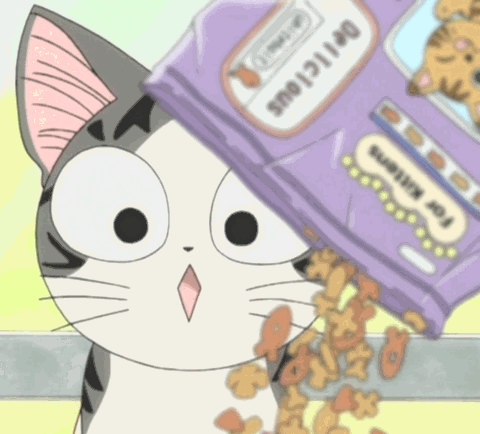
#japanese#japanese language#langblr#japaneseblr#japanese langblr#jpnlangblrnet#日本語#文法#マンガ#チーズスイートホーム
117 notes
·
View notes
Text

Grammar Points
Passive verb conjugation (拾う➝拾われる)
ちゃ = informal contraction of では that functions as a conditional statement
Short form verb conjugation (~た = plain past tense)
~んだ (casual, spoken form of のだ; used to provide an explanation or to emphasize a point)
~がる (expresses someone's desire or wish in the third-person, meaning someone else wants to do something)
~みたい (looks like; seems like)
Question: How does 生きていけない work? 生きて is the て form of the verb 生きる, but what is the いけない ending? It's not 〜てはいけない so what is it? A search online revealed it could be the potential form of the verb 行く, which is 行ける, meaning "to be able to go" or "to be able to do something." Is this correct? 🤔

#japanese#japanese language#langblr#japaneseblr#jpnlangblrnet#japanese langblr#manga#日本語#勉強#マンガ#チーズスイートホーム
117 notes
·
View notes
Text
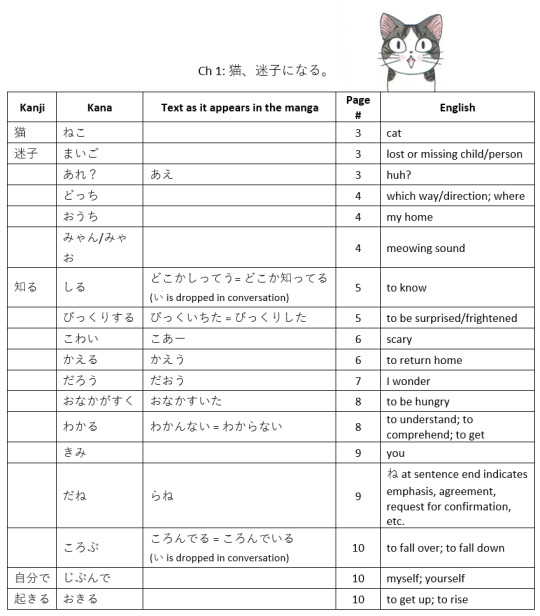
みんな、マンガを読むの始めました! 😺
チーちゃんはとても小さくて、かわいいですね~ 子猫用が大好きです! 😍
単語のリストを作りました。このマンガはチーちゃんの話すのが子供っぽいので、分かるのがちょっと難しいですね。
読むのがんばります!
58 notes
·
View notes
Text

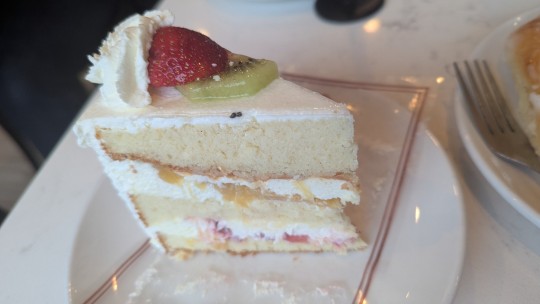
明日で、アンディさんのフラッシュカードデッキの勉強を始めてから1週間になります。やっぱり、アンディの漢字の勉強法の方が簡単だと思います。毎日がんばります!
先週の土曜日はバレンタインデーのデートをしました。カフェに行って、フルーツケーキを食べて、バニラカフェラテを飲みました。すべてとても美味しかったです!
それから、本屋さんに行って、マンガを読んで、すこし日本語を勉強しました。新しいぬいぐるみも買いました。丸くて、ぷにぷにでイチゴのプシーンです!とてもかわいいでしょう?プシーンはかわいい猫ですよ~ (*´▽`*)
じゃ、またね!
3 notes
·
View notes